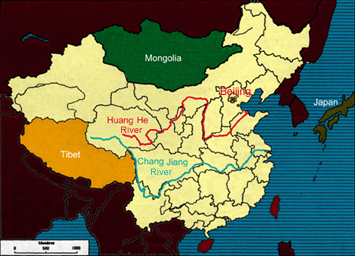Introduction
Traditional Chinese Medicine (TCM) has a long and rich history,
and is the third oldest form of medicine. Only Egyptian and Babylonian medicine predates it. The fact that TCM has existed for thousands of years, and is still used today is a testament to its value as a form of healthcare.
 |
Hanging Gardens of Babylonia ( 3500B.C.) |
 |
Chinese pot "Caldron" sometimes used in making pills
( 1600B.C.) |
 |
Egyptian medicine man
(3000BC)
|
The isolation of China throughout history plays a role in TCM's lack of development in other world civilizations. However, with the opening of China in 1972 it has been spreading to Western and European countries. TCM's practice has been shaped over time by many factors including culture, philosophy, politics, religion, and science.
Today, we think of China as being one united country, but this is only a recent development in the country's history. Throughout the centuries, China was made up of many states that were often at war with each other and repeatedly united and divided. These states were ruled by dynasties and were feudalistic societies.
 |
Map of China
|
Development of TCM, therefore, was not always a sequential build up of knowledge based on the previous dynasty's contributions. How the individual practiced TCM was influenced largely by his teacher's views. Even today, we see these differences. For example, different TCM practitioners may prescribe a person with the same symptoms different herbal remedies. Each herbal remedy will cure the symptoms even though they have different ingredients. The success of the treatment is measured through observation and how the patient feels.
Traditional Chinese medicine plays a very important part in medicine's history. Understanding TCM through a historical context gives insight to this ancient form of medicine and establishes its validity as a healthcare system.
|